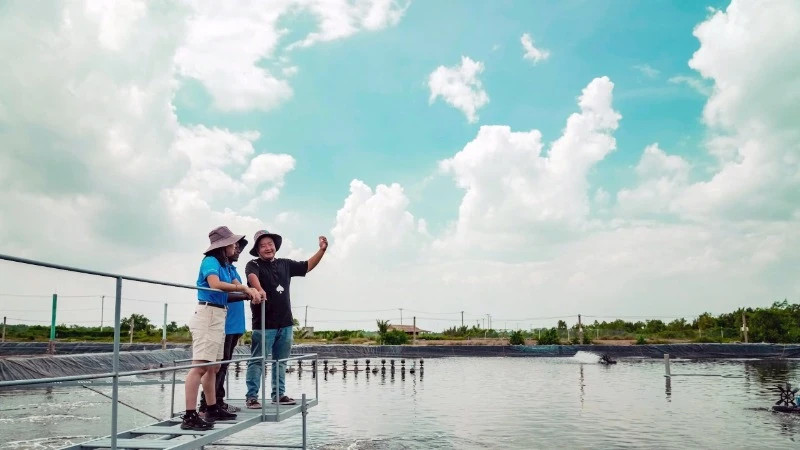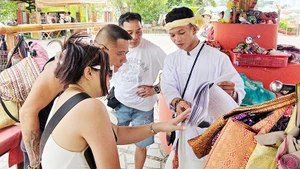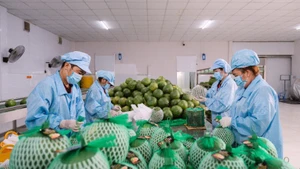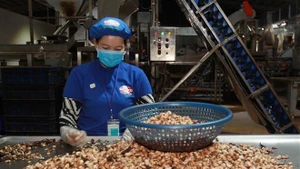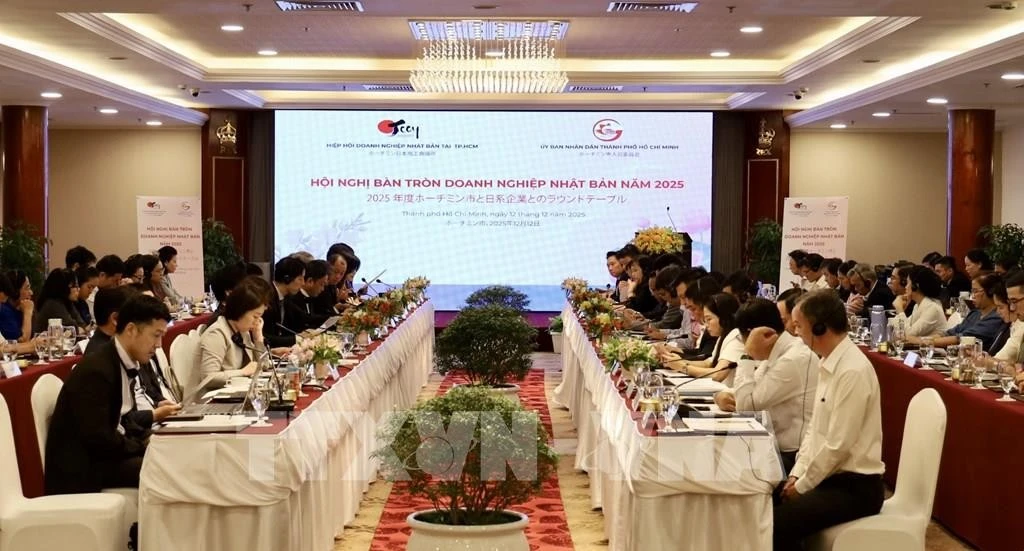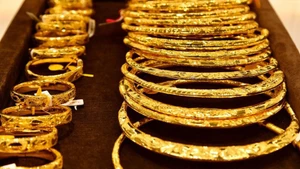Saving shrimp, innovating shrimp development strategies to help farmers get rich, helping this product of Vietnam to be competitive with any country in the world - that has always been the dream of Dr Tran Huu Loc, who is often called the "doctor" of shrimp.
Tran Huu Loc, born and raised in Ho Chi Minh City, is a young scientist.
After half a century of complete liberation of the South, the youth of the city named after Uncle Ho today always follow in the footsteps of their ancestors, contributing their intelligence and efforts to build their homeland.
From a boy who loves shrimp and fish to a doctorate at the University of Arizona
From loving to sticking with a field is not a simple journey. After graduating from university in 2006, he not only stopped at the position of an agricultural engineer, but he was determined to apply for a doctoral scholarship at the University of Arizona (the US), specialising in microbiology and shrimp pathology.
When professors in the US asked why he wanted to come here to study aquaculture, he frankly shared: Seafood export plays an important role in the Vietnamese economy. He wanted to learn the most advanced technologies in the world in aquaculture, first to supplement his knowledge, then to enrich himself, his people and his country.
Coincidentally, in 2010, when Tran Huu Loc started studying in the US, a strange disease on shrimp appeared, tentatively named early mortality syndrome (EMS). Global shrimp production decreased, and even the world's leading country at that time, Thailand, suffered billions of dollars in losses.
Faced with the news that shrimp farmers in his hometown were struggling, with many even losing their entire businesses, he chose this disease as the topic of his doctoral thesis - a risky decision because even though there may be appropriate initial diagnoses, finding the cause is a much more complicated task; researchers may follow the wrong traces or not find a solution.
In that case, his thesis could have taken many years and far exceeded the scholarship period he was granted, which meant failure. However, he still threw himself into the research.
After three years of traveling back and forth between Vietnam and the US to collect samples, conduct experiments; at the same time, interviewing hundreds of farmers to understand the stages of disease progression through their daily observations, he accurately identified acute hepatopancreatic necrosis disease in shrimp (AHPNS) caused by the bacteria Vibrio parahaemolyticus.
“When the early mortality syndrome pandemic hit shrimp farming areas in Asia, there were many theories and hypotheses about the cause of the disease. There were heated debates while economic losses amounted to billions of dollars. Through meticulous experiments, Tran Huu Loc finally solved the problem, helping farmers learn how to control the pathogen and develop disease-resistant or disease-free shrimp stocks. The application of the research results was used almost immediately, with benefits received by thousands of shrimp farmers,” said Dr Kevin Fitzsimmons, a Professor, Research Scientist and Aquaculture Extension Specialist at the University of Arizona, Department of Environmental Science.
 |
| Dr Tran Huu Loc (right) discusses with colleagues the results of the experimental analysis. (Photo: THUC KHUE) |
With this breakthrough, Tran Huu Loc succeeded in applying disease prevention methods by strictly controlling the selection of shrimp breeds, treating water sources and planning farming areas in a biosafety direction. His research was quickly recognised by the University of Arizona and selected as one of the 20 school events in 2013, and at the same time, helped him complete his doctoral programme.
Vietnam's first shrimp hospital
In 2024, Vietnam's shrimp farming output will reach 1,246.5 thousand tonnes, up 5.3%; total export turnover will reach nearly 4 billion USD, continuing to be the mainstay of the aquaculture industry.
It is expected that by 2025, the brackish water shrimp farming area will reach 750,000 hectares. The annual expansion poses many challenges for shrimp farmers and scientists like Dr Loc.
Rejecting job offers in the US, he returned home and continued teaching at Ho Chi Minh City University of Agriculture and Forestry.
“We appreciate that Dr Loc has refused many job offers abroad that could have provided him with better working conditions and income, so that he can return to devote his passion, knowledge, experience, and dedication to the school and the country. Together with many other experts, Dr Loc is enthusiastically supporting the Vietnam Agricultural Products Marketing Project of the Vietnam Marketing Association with the desire to develop and elevate five areas of Vietnamese agricultural products, including seafood,” said Dr Tran Dinh Ly, Vice President of Ho Chi Minh City University of Agriculture and Forestry.
Not only an enthusiastic lecturer, in 2014, Dr Loc pioneered the establishment of the Aquatic Pathology Research Department (Shrimpvet). His orientation for Shrimpvet is a non-profit activity; a place to provide updated knowledge, testing services, and procedures to prevent diseases for shrimp and other aquatic species; at the same time, research modern technologies for aquaculture; in the spirit of being willing to share.
He hopes that even when transferred to another generation, Shrimpvet will still stand firm independently and be an asset to the Vietnamese shrimp industry. In addition, this is also a place for his students, in particular, and aquaculture students in general, to have the opportunity to practice and immediately apply knowledge into practice.
Shrimpvet's operating model is the only one in Vietnam with a laboratory system that meets ISO-17025 standards and has quickly proven its effectiveness as a "hospital" for shrimp.
From its initial base in Ho Chi Minh City, Shrimpvet now has branches in Ninh Thuan, Bac Lieu, becoming a trusted address for businesses and shrimp farmers when they need services such as pathology analysis, advice on animal feed, and microbiology. Working here, in addition to Vietnamese people, there are also many experts from Myanmar and Kenya.
Yin Min Thant, a Myanmar citizen, Communications Manager, Research and Development Management Department of Shrimpvet, said: “In my country, there is no unit similar to Shrimpvet. I feel very lucky to work at a well-organised research unit in aquatic pathology, specifically shrimp, with many annual projects, helping me gain valuable experience. I believe that these things will create conditions for me to return to help my homeland in the future”.
In 2022, when Translucent Post-Larvae Disease (TPD) showed signs of appearing in our country, Shrimpvet quickly took action, researched, isolated bacterial strains, and identified the pathogen. By September 2023, Shrimpvet had concluded and sent a report to the Department of Fisheries, Ministry of Agriculture and Rural Development, to promptly recommend and guide farmers on preventive measures, reducing the risk of damage.
Dr Loc has always been concerned about the Vietnamese shrimp industry, hoping that farmers can get rich and stand firm in their profession, so that Vietnamese shrimp can rise to the world's leading position.
Having worked side by side with farmers for many years, he understands that there are people who put their entire family's livelihood on a batch of shrimp. Therefore, he strives to find new strategic development directions for the shrimp industry to optimise the system and production process to be simple, sustainable, with the lowest cost, but still achieve the highest stability.
“Recently, we have coordinated with local authorities to pilot a 30-hectare module that can produce 2,000 tonnes of shrimp per year in Dong Hai District, Bac Lieu Province. We hope this will be a standard model for replication, with a methodical process, carefully calculated from the production scale, stocking density, environmental capacity, waste treatment system, towards sustainable development, and especially reasonable investment costs. My dream is that our seafood industry has a solid position, strong enough to compete with any country in the world,” Dr Tran Huu Loc affirmed.
Dr Tran Huu Loc, born in 1984, is currently a lecturer at the Faculty of Aquaculture, Ho Chi Minh City University of Agriculture and Forestry; international advisor to the Food and Agriculture Organisation of the United Nations (FAO), the Asian Aquaculture Organisation, the World Aquaculture Alliance; consultant for the Ministries of Agriculture of many countries; Director of the Shrimpvet Aquatic Pathology Research Department. He was honoured as a typical young citizen of Ho Chi Minh City in 2014.
